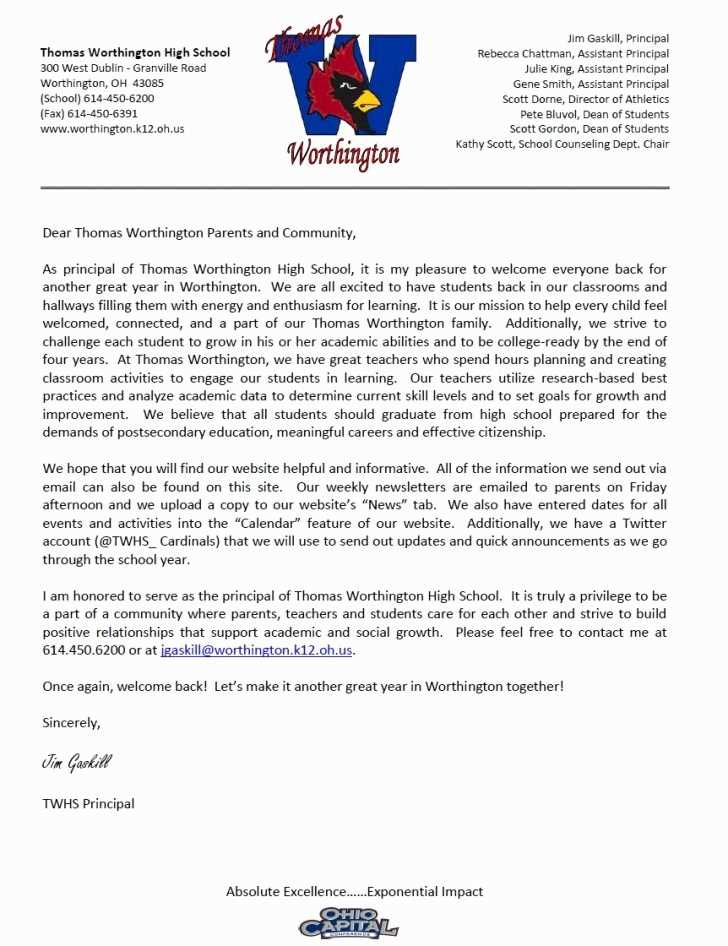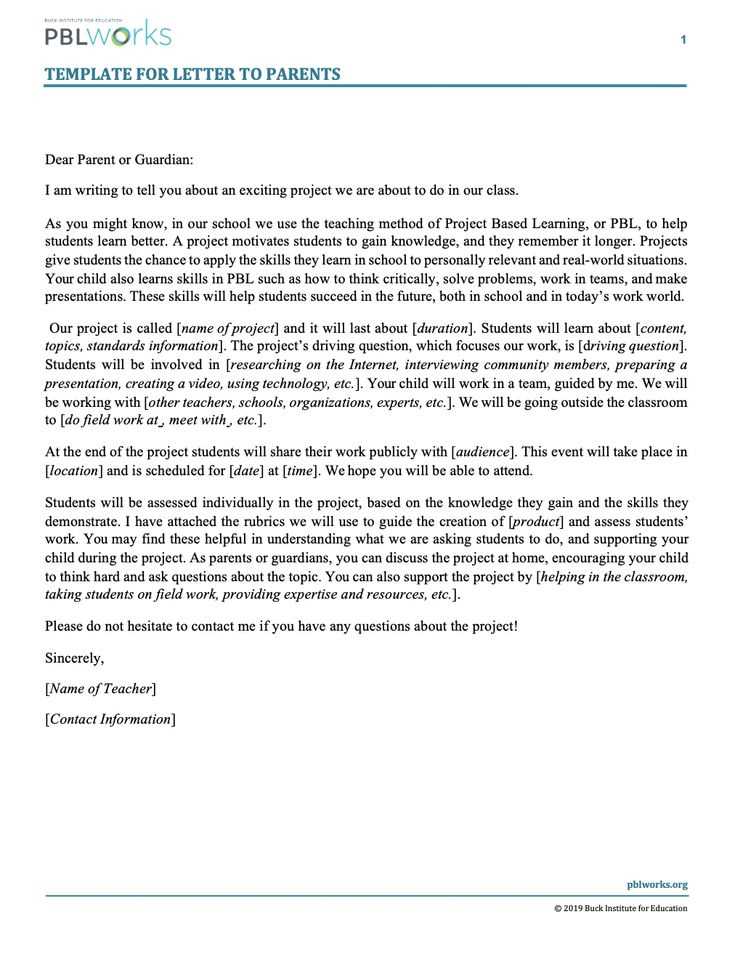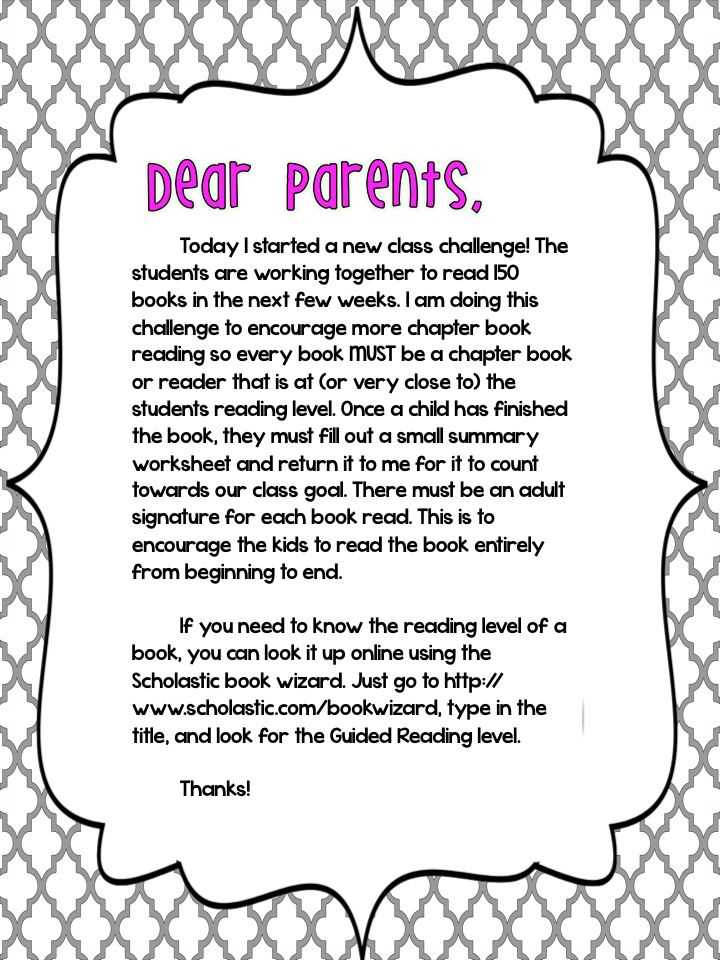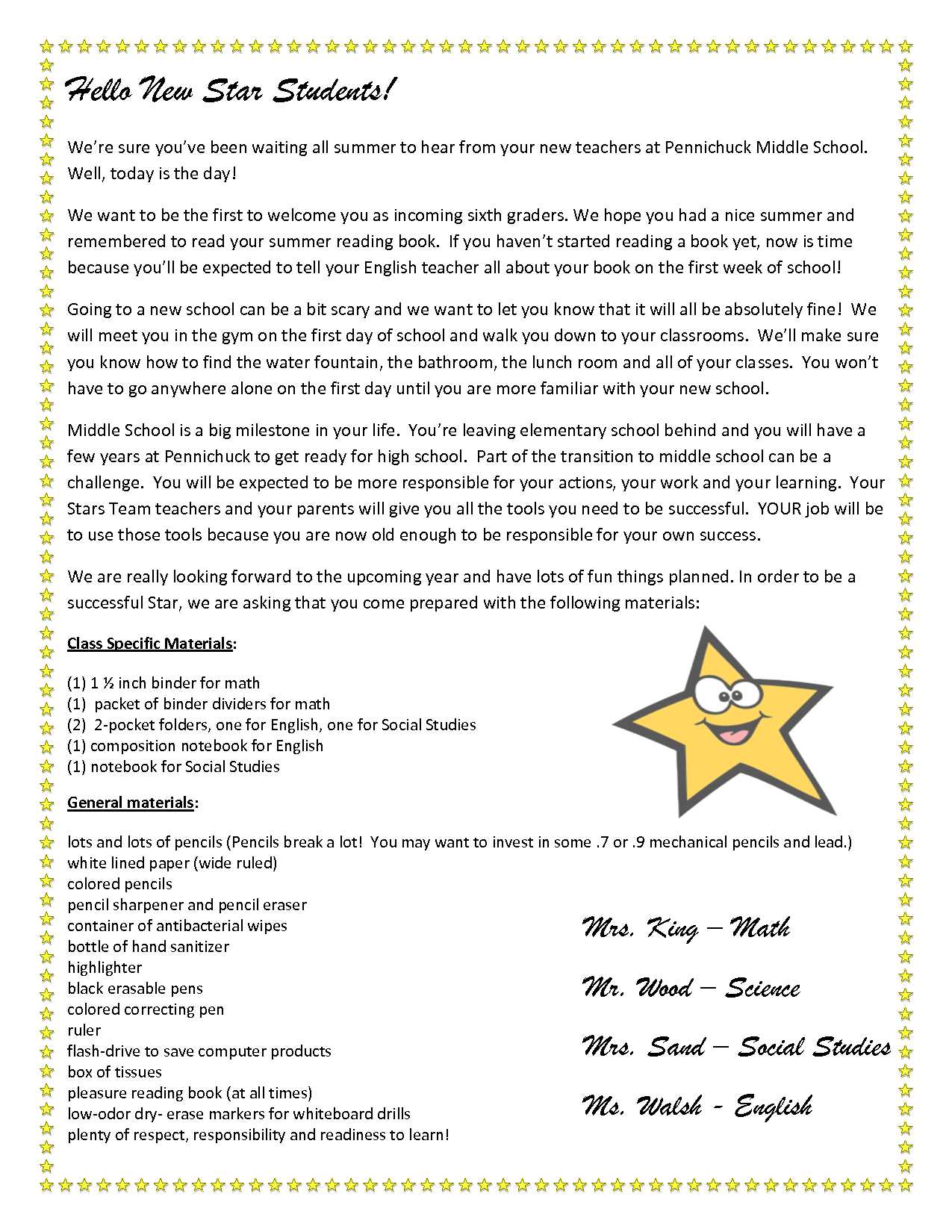Weekly parent letter template

To keep parents informed and engaged with classroom activities, send out a weekly update. Start by highlighting key events, upcoming assignments, or any changes in the schedule. Be concise but thorough, giving parents enough information to stay involved without overwhelming them.
Include the following sections in your letter:
- Class Highlights: Briefly mention significant activities or lessons that took place during the week.
- Important Dates: List upcoming events, such as field trips, holidays, or parent-teacher conferences.
- Student Achievements: Recognize individual or group accomplishments that parents can celebrate.
- Action Items: Inform parents about any tasks they need to complete, such as signing permission slips or providing materials for a class project.
End your letter with an invitation for parents to reach out with any questions or concerns. This keeps communication open and encourages further collaboration. Make sure to sign off with a personal touch, adding a sentence or two that reflects your appreciation for their involvement.
Weekly Parent Letter Template
Start each letter by clearly stating the main points for the week. This helps parents focus on what matters most without feeling overwhelmed.
- Important Dates: Include any upcoming events, holidays, or school activities. Use bullet points for easy reading.
- Student Achievements: Highlight specific accomplishments or milestones reached by students. Recognizing effort and progress can be motivating for both students and parents.
- Homework and Assignments: Clearly list any assignments or projects due. If there are special instructions, ensure they are easy to find and understand.
- Classroom Activities: Share what the students will be learning or working on that week. A brief overview will keep parents informed about the academic focus.
- Behavioral Updates: If necessary, provide a brief update on student behavior or classroom expectations. Keep it constructive and positive.
End the letter with a reminder of how parents can contact you for any questions. Keep the tone approachable and professional, encouraging communication.
To maintain clarity, use bullet points or numbered lists where appropriate. This format ensures that parents can easily skim through the letter and find what they need quickly.
How to Structure Your Weekly Parent Letter
Begin with a clear and concise introduction. State the purpose of the letter and any key updates for the week. Focus on providing valuable information such as important dates, changes in routine, or upcoming events.
Next, organize the body of your letter into sections. Address each topic separately to keep the content easy to follow. For example, dedicate one paragraph to student achievements, another to classroom activities, and a third to any administrative updates or reminders.
Include a section for any specific notes about student progress or needs. If appropriate, offer suggestions for at-home support or highlight positive behavior and efforts. Personalize this section when possible to show individual attention.
End the letter with a call to action or a friendly note encouraging parents to reach out with questions. Provide contact details for easy communication and offer appreciation for their continued involvement.
Creating a Positive Tone in Your Communication

Use clear, concise language to communicate directly with parents. Focus on specific accomplishments or areas of growth to highlight the positive aspects of their child’s week. Avoid generalizations and instead share details that show genuine interest in their child’s progress.
Incorporate encouraging language to promote motivation. Phrases like “Keep up the great work” or “It’s exciting to see improvements” help to create an atmosphere of support. Acknowledge both small and large achievements, making the parents feel confident in their child’s learning process.
Balance constructive feedback with positivity. When addressing areas for improvement, focus on actionable steps and the progress already made. Phrasing like “Let’s continue to work on…” keeps the message forward-looking while maintaining an upbeat tone.
Ensure that your message is inclusive and inviting. Encourage parents to reach out with questions or share any concerns, reinforcing that communication is a two-way process. This openness builds trust and ensures a stronger partnership with families.
Finally, keep the tone consistent across all communication. A regular, positive update reassures parents and sets a steady rhythm for the relationship. This consistency in tone fosters a welcoming and supportive environment for both students and parents alike.
Key Information to Include Every Week
Make sure to highlight upcoming events, so parents can plan ahead. Clearly list dates and times for activities like field trips, parent-teacher meetings, or special events. Use bullet points for easy scanning.
Classroom Updates

Give a brief update on classroom activities and achievements. Share what students are learning, any projects they’re working on, or key milestones reached. This keeps parents in the loop and fosters engagement.
Reminders and Requests
Include any important reminders such as required forms, school supplies, or specific tasks for the upcoming week. If there are items parents need to send with their child, list them clearly to avoid confusion.
Personalizing Your Letter for Different Student Needs
Address each student’s progress with specific examples, whether it’s academic achievements or areas for growth. If a student has shown improvement in a particular subject, highlight that progress and encourage continued effort. For students who may need additional support, offer suggestions or resources that could help them succeed without sounding critical.
Consider the unique challenges a student might be facing, such as social or emotional concerns, and include supportive language that assures parents of your commitment to their child’s well-being. Recognizing a student’s strengths while acknowledging their challenges will create a balanced and encouraging tone.
For students who excel in certain subjects, suggest opportunities for advanced learning or projects that could keep them engaged and motivated. For those who may struggle, recommend specific steps they can take to improve, along with your availability to assist with any difficulties they encounter.
Keep the language friendly and approachable, ensuring parents feel informed and supported. Personalize each letter based on the student’s individual needs, offering clear guidance and actionable suggestions for growth. This approach builds trust and encourages a positive partnership between home and school.
Best Practices for Addressing Concerns or Challenges

Respond to concerns or challenges with clarity and empathy. Begin by acknowledging the issue, showing that you understand its significance to the parent. Be direct and honest in your communication, avoiding vague statements that may lead to confusion.
1. Provide Specific Solutions

Outline clear actions you plan to take, with timelines where possible. Offering a solution that can be implemented promptly shows commitment and keeps the parent informed. Reassure them that you are working toward a positive outcome.
2. Maintain Open Communication
Ensure that parents know they can contact you for updates or further discussions. Transparency in communication strengthens trust and shows that you’re open to collaboration. Always reply to inquiries within a reasonable timeframe to keep the conversation flowing.
| Concern | Solution | Timeline |
|---|---|---|
| Late Assignments | Set up a meeting with the student to review deadlines | Within the week |
| Behavioral Issues | Arrange a conference call to discuss behavior strategies | By next Friday |
| Academic Struggles | Provide additional resources and extra support sessions | Ongoing support |
By addressing concerns head-on with clear actions and constant communication, you build stronger relationships with parents and ensure better outcomes for students.
Ensuring Timeliness and Consistency in Sending Letters

Set a regular schedule for sending letters, such as every Friday afternoon, so recipients know exactly when to expect updates. This helps maintain consistency in communication.
- Plan in advance: Prepare the letter content ahead of time to avoid last-minute rushes. Keep a template ready that you can modify based on the week’s events or news.
- Use reminders: Set automatic reminders in your calendar or task management app to ensure you don’t miss a week.
- Stick to the same format: Keep the structure of your letters consistent. This helps both you and the reader to easily track the content from week to week.
Consistency isn’t just about timing, it’s also about the message. Stay true to the tone and style you’ve established. This builds trust and expectations with your audience.
- Keep it simple: Avoid long, complicated sentences. A clear, straightforward message is always better received.
- Double-check for accuracy: Before sending, verify the details to avoid mistakes that could disrupt the flow of communication.
- Stay organized: Use folders or tags to keep track of past letters, making it easier to maintain continuity over time.